The End of Apartheid Litigation and the Future of Corporate Accountability
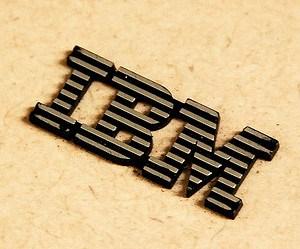

The quest to hold corporations liable for alleged human rights abuses committed abroad was dealt another blow late last month when a New York District Court judge tossed the last of the apartheid-related cases pending against two American corporations, Ford and IBM.
In a begrudging bow to current precedent, U.S. District Judge Shira Scheindlin, of the Southern District of New York, denied plaintiffs’ motion to amend their complaint because they would be unable to meet the stringent demands of a test announced by the Second Circuit Court of Appeals earlier in the year. More importantly, if the law of the Second Circuit becomes the law of the land, U.S. corporations could be effectively immune from civil liability for violations of international law that are perpetrated exclusively by foreign subsidiaries on foreign soil.
The Alien Tort Statute and a refresher on the Supreme Court’s Kiobel decision
The Alien Tort Statute (ATS) grants jurisdiction to U.S. District Courts “of all causes where an alien sues for a tort only in violation of the law of nation or of a treaty of the United States.” As I described in an earlier piece for TriplePundit, the question of the ATS’ application to corporations is muddy. In the seminal 2013 case, Kiobel v. Royal Dutch Petroleum (Kiobel), the Supreme Court affirmed the dismissal of a suit brought by Nigerian citizens who alleged that Shell and other oil companies aided in the Nigerian government’s violent suppression of resistance to drilling operations in Nigeria. In affirming the holding of the Second Circuit, the majority held that, because all of the alleged human rights abuses occurred abroad, the plaintiffs could not overcome the presumption against the application of U.S. law to conduct occurring outside of the U.S. (aka “extraterritorial” application).
"Touch and concern"
In Kiobel’s most important passage, the Court added that:
[E]ven where [plaintiffs’] claims touch and concern the territory of the United States, they must do so with sufficient force to displace the presumption against extraterritorial application. Corporations are often present in many countries, and it would reach too far to say that mere corporate presence suffices. (my emphasis)
The Supreme Court did not define the all-important phrases, “touch and concern” or “sufficient force,” leading lower courts and pundits to fight about whether or not the opinion completely closed the door to lawsuits against corporations that allegedly violated international law in a country other than the U.S. Further confusing the matter is that the Second Circuit, in its decision in the Kiobel case, held that the ATS “simply does not confer jurisdiction over suits against corporations,” and though the Supreme Court did not appear to go this far, it did affirm the Second Circuit’s holding.
Thus, after Kiobel, whether and/or how a corporation could be held liable under the ATS remains an open question.
Perhaps anticipating the fallout from the opacity of the majority’s opinion, two concurring opinions were issued from the Court -- one by a liberal, Justice Stephen Breyer, and another by a conservative, Justice Samuel Alito -- both of whom attempted to clarify the ambiguous “touch and concern” test articulated by the majority. (More on this below.)
Background on the apartheid cases
The aforementioned In re South African Apartheid Litigation began in 2002, when numerous complaints were filed in the Southern District of New York against dozens of international corporations. According to the plaintiffs, these corporate defendants allegedly violated the ATS by providing material and logistical support to South Africa’s former apartheid regime.
Over time, the District Court dismissed all of the corporate defendants except Ford and IBM, against which Judge Scheindlin allowed plaintiffs to amend their complaints to provide evidence that the companies’ activities “touched and concerned” the territory of the U.S, pursuant to the Kiobel decision.
In their revised pleadings, plaintiffs claimed that IBM’s South African subsidiary, at the direction of IBM headquarters in New York, intentionally developed computer technology to “purposefully facilitate and enable” the apartheid government’s repression of black South Africans. With respect to Ford, plaintiffs alleged that the company supplied specialized vehicles to South African security forces -- including vehicles not otherwise available to the general public.
In both instances, plaintiffs alleged that the companies’ corporate headquarters in the U.S. actively pursued business relationships with South Africa’s apartheid government, in circumvention of the existing U.S. embargo and sanctions regime and clear international law prohibitions.
Justice Alito and the future of corporate liability
Following Justice AlitoLast year, the Second Circuit adopted the “touch and concern” test formulated by Justice Alito in his concurring opinion in Kiobel (the Alito Test), mentioned above. Unfortunately for the apartheid plaintiffs, when it came time for Judge Scheindlin to rule on the claims against Ford and IBM, she was bound to abide by Second Circuit precedent and apply the Alito Test.
This was unfortunate for the plaintiffs because the Alito Test is virtually impossible to meet. In short, the test states that a defendant's behavior can only be said to “touch and concern” the U.S. with “sufficient force” to overcome the presumption against the extraterritorial application of the ATS if a plaintiff can show that the defendant engaged in conduct (i) in the U.S. that (ii) itself constituted a violation of international law. In other words, Alito is saying that what U.S. corporations do abroad is irrelevant unless they are in violation of international law here at home.
The Alito Test protects corporations with foreign subsidiaries
Applying the Alito Test, the Second Circuit had previously stated that defendants’ control over their foreign subsidiaries would, in and of itself, never be sufficient to invoke the ATS. Judge Scheindlin, in her final opinion in the apartheid case, explained why this is true. While a parent is typically liable for the bad acts of its subsidiaries, under Kiobel, violations of international law that occur exclusively on foreign soil are simply not actionable claims. Therefore, because vicarious liability requires that the underlying conduct of a subsidiary be actionable, in Alito’s world, the parent could never be held liable for a subsidiary’s conduct occurring entirely abroad.
It seems, then, that all an American corporation has to do to protect itself from ATS exposure is ensure that, to the extent it engages in violations of international law in another country, it does so through a foreign subsidiary. Under the Alito Test, such conduct could never reach an American court.
As for Judge Scheindlin, her hands were tied. “That these plaintiffs are left without relief in an American court is regrettable,” she wrote. “But I am bound to follow [precedent], no matter what my personal view of the law may be.”
Image credit: Flickr/chrisdag
Rolls-Royce set to power up science teaching in UK


Power systems company Rolls-Royce has entered into a three-year partnership with UK education charity Teach First, to help provide inspirational science teaching to young people from disadvantaged backgrounds.
Teach First trains and supports people with leadership potential to become inspirational teachers in schools in low-income communities across the UK. The partnership with Rolls-Royce will enable Teach First to recruit and train an additional 75 science, technology, engineering and maths (STEM) teachers.
Colin Smith, Rolls-Royce, director of engineering and technology, said: "Advanced manufacturing companies like Rolls-Royce offer fantastic career opportunities to people who excel in STEM subjects and it is important that these opportunities are open to children from a diverse range of backgrounds. Teach First is making significant progress in increasing the uptake of STEM subjects among young people and we are delighted to help support the great work that they do."
Brett Wigdortz, ceo of Teach First, added: "The UK economy needs 40,000 extra STEM graduates each year to fill the 104,000 graduate-level STEM jobs the economy requires. But too few students are taking up these subjects and the problem is even worse for pupils in low-income communities.
"Talented and passionate teachers are vital to solving this educational and economic challenge and we are delighted that through the support from Rolls-Royce we will be able to reach and inspire another 11,250 pupils."
Global retailers failing to address overall carbon footprint


Retailers such as Carrefour, Costco, IKEA, Tesco and Walmart should aim for more comprehensive carbon disclosures and collaborate to define meaningful GHG emissions reduction strategies for the industry, says a new report from independent analyst firm Verdantix.
The analysis finds that while retailers are addressing carbon disclosures relating to fuel use and electricity, disclosure relating to emissions data on product use, procurement, logistics and waste disposal is ‘patchy’.
The detailed analysis of GHG emissions by the firm covers grocery retailers Aeon, Carrefour, Costco, John Lewis, Metro Group, Tesco, Walmart and Whole Foods; home improvement stores IKEA and The Home Depot; drugstore chain CVS Caremark; and apparel firms H&M, LVMH and TJX Companies.
The Verdantix report, Carbon Strategy Benchmark: Retail Sector, finds that the retail sector is struggling to define and achieve carbon reduction targets.
Only four retailers in the study have valid targets for absolute carbon reduction. Tesco aims to become carbon neutral by 2050. John Lewis Partnership is aiming for a 15% reduction, relative to 2010. Carrefour aims for a 40% reduction in 2020 compared to 2009 levels. The Home Depot aims to cut its scope 3 upstream transport and distribution emissions 20% in absolute terms by 2015 versus 2009.
The variations in start dates, end dates and coverage of emissions sources makes “comparison meaningless for investors and stakeholders”, Verdantix maintains.
“The retail brands in this benchmark have invested in carbon disclosures but the sector has not yet grasped the nettle of carbon reductions,” commented Ross MacWhinney, Verdantix senior analyst and GHG accounting expert.
Picture credit: © Eugenesergeev | Dreamstime.com - Supermarket Shopping Carts Photo
3p Traceability Week: Q&A with Flip Labs on Seafood Traceability
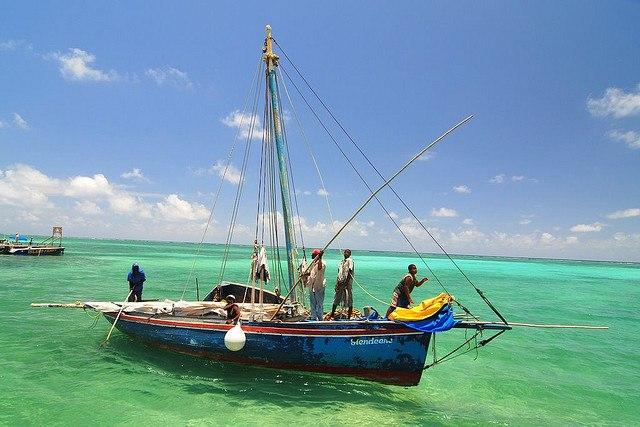

Join Triple Pundit and a panel of experts for 3p Traceability Week to discuss traceability in four controversial arenas — seafood, fashion, minerals and medical marijuana. Ask your questions in the comments section, and follow along here. The Q&A closes on Tuesday, September 16.
Fact: More than one-third of the seafood sold in North America is mislabeled, by either type of fish, catch method or provenance. And upwards of 24 million tons of seafood is caught and sold illegally every year.
Traceability is a hot-button issue in all supply chains, but when it comes to the food we eat, these figures become even more unsettling. As Cheryl Dahle, founder of Future of Fish and CEO of Flip Labs, noted in a recent op/ed on Triple Pundit: "Beyond what that deception may mean for your health, it is also a window to other more systemic challenges, including pirate fishing, human trafficking, and widespread fraud and corruption."
She went on to explain that these problems can't be addressed by a few consumers making the choice to "eat local." "We need to rebuild the systems and behaviors of the global interconnected brokers, corporations and governments that touch your food before it hits your plate," she wrote.
To accomplish this, stakeholders in the seafood industry have come together to compile verified data on where and how a fish is caught. Regulators already require any seafood caught or sold in the U.S. to provide documentation of where, when and how it was caught. But, as 3p correspondent Lauren Zanolli pointed out, that information is still often filed on paper forms, and there is no way of knowing if it will follow the right piece of seafood through the supply chain. So, naturally, some questions remain about how to improve traceability in seafood supply chains.
As part of 3p Traceability Week, Cheryl Dahle of Flip Labs will be on-hand all week to answer your questions about seafood traceability. Respond with your questions in the comments section below!
To get the conversation started, we have a few questions of our own:
- What are the biggest barriers you face in creating end-to-end traceability in the seafood industry?
- How has technology changed the game in terms of monitoring inventory? What technology do you think is most promising for offering an end-to-end solution?
- Imagining that every business at every step of the seafood supply chain has technology in place to monitor their stock in and out; what else is needed to achieve whole-chain traceability?
- What strategies or initiatives have been useful in making progress towards better traceability in the seafood industry? Are there any examples or initiatives you can point to that have had some success?
Image credit: Flickr/good_day
3p Traceability Week: Q&A with MJ Freeway on Medical Marijuana Traceability
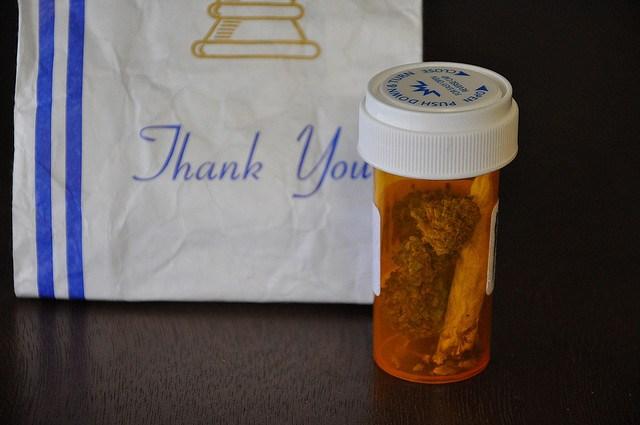

Join Triple Pundit and a panel of experts for 3p Traceability Week to discuss traceability in four controversial arenas — seafood, fashion, minerals and medical marijuana. Ask your questions in the comments section, and follow along here. The Q&A closes on Tuesday, September 16.
Sustainability is inching ever-closer to the mainstream, but it isn't the only green revolution sweeping the nation. I'm referring, of course, to marijuana legalization. The "Reefer Madness" days are long gone: Medical marijuana sales are now permitted in 23 states and Washington, D.C., and two states (Washington and Colorado) have outright legalized marijuana for adults 21 and over.
The industry has proven to be a big money-maker -- Colorado raked in about $12.6 million the first three months after marijuana was legalized -- but some growing pains remain. Washington and Colorado, where recreational pot is legal, have seen a wave of 'marijuana tourism.' As flocks of tourists seek out a taste of legalized marijuana, some inexperienced smokers may catch a sour buzz -- as New York Times columnist Maureen Dowd experienced firsthand when she took one too many bites of a pot edible while visiting Denver. As Dowd found out, some edibles do not include dosage instructions; the candy bar she ate, for example, was intended to be divided into 16 pieces for novices, but that recommendation was not included on the label.
When it comes to medical marijuana, these concerns can become even more pronounced. Things like dosage instructions, predictable levels of Tetrahydrocannabinol (THC) and verification that the marijuana contains no additives are necessary if the product is to be dispensed for therapeutic purposes. For both medical and recreational use, it is also pertinent for legal processors, infused product manufacturers and retailers to verify that the marijuana they sell was sourced from legal grow operations. All of these concerns make traceability a big issue for this fledgling industry.
As part of 3p Traceability Week, the MJ Freeway team will be on-hand all week to answer your questions about medical marijuana traceability. Based in Denver, Colorado, where both medical and recreational marijuana sales are legal, MJ Freeway provides software solutions that help producers, processors, infused product manufacturers and retailers track the product throughout the supply chain -- from field to cash register. Respond with your questions in the comments section below!
To get the conversation started, we have a few questions of our own:
- What are the biggest barriers you face in creating end-to-end traceability in the medical marijuana industry?
- How has technology changed the game in terms of monitoring inventory? What technology do you think is most promising for offering an end-to-end solution?
- Imagining that every business at every step of the medical marijuana supply chain has technology in place to monitor their stock in and out; what else is needed to achieve whole-chain traceability?
- What strategies or initiatives have been useful in making progress towards better traceability in the medical marijuana industry? Are there any examples or initiatives you can point to that have had some success?
Image credit: Flickr/trawin
3p Traceability Week: Q&A with Indigenous on Fashion Traceability


Join Triple Pundit and a panel of experts for 3p Traceability Week to discuss traceability in four controversial arenas — seafood, fashion, minerals and medical marijuana. Ask your questions in the comments section, and follow along here. The Q&A closes on Tuesday, September 16.
The fashion industry has one of the most controversial supply chains out there: Finding a garment that's made from sustainable materials by workers who were paid fair wages can seem next to impossible for concerned consumers.
Since clothing manufacturing is typically contracted out to third-party factory operators, it was once possible for big brands to claim ignorance and hide behind their convoluted supply chains -- but those days are long gone. Ever since the tragic Rana Plaza factory collapse claimed the lives of 1,129 garment workers in 2013, the spotlight has increasingly centered on sustainability within the fashion supply chain -- and a growing number of consumers are asking where their clothes came from.
Behind relatively simple questions -- such as what a garment is made from, who made it and where -- lie even more complicated queries: Is end-to-end traceability even possible? Will brands jump on board? What is already being done to pull back the veil on the fashion supply chain?
As part of 3p Traceability Week, Matthew Reynolds and Scott Leonard, co-founders of the fair trade fashion label Indigenous, will be on-hand all week to answer your questions about fashion traceability. Respond with your questions in the comments section below!
To get the conversation started, we have a few questions of our own:
- What are the biggest barriers you face in creating end-to-end traceability in the fashion industry?
- How has technology changed the game in terms of monitoring inventory across the supply chain? What technology do you think is most promising for offering an end-to-end solution?
- Imagining that every business at every step of the fashion supply chain has technology in place to monitor their stock in and out; what else is needed to achieve whole-chain traceability?
- What strategies or initiatives have been useful in making progress towards better traceability in the fashion industry? Are there any examples or initiatives you can point to that have had some success?
Image credit: Flickr/joebrent
3p Traceability Week: Q&A with Source Intelligence on Mineral Traceability
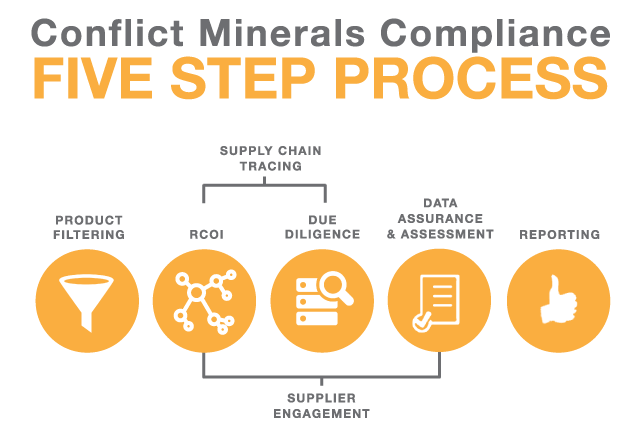

Join Triple Pundit and a panel of experts for 3p Traceability Week to discuss traceability in four controversial arenas — seafood, fashion, minerals and medical marijuana. Ask your questions in the comments section, and follow along here. The Q&A closes on Tuesday, September 16.
On August 22, 2012, the SEC issued a final rule on conflict minerals in accordance with Section 1502 of the Dodd-Frank Act. The rule requires companies to disclose annually whether any conflict minerals -- tin, tantalum, tungsten and gold that originated in the Democratic Republic of Congo or an adjoining country -- are necessary to the functionality or production of a product. If these minerals are deemed necessary, as defined by the provision, companies must provide a report describing "the measures taken to exercise due diligence on the source and chain of custody of those minerals." Each report must include an independent private-sector audit.
Outside of the jewelry you'd expect, these minerals are used in a wide array of products, including the beloved technology many Americans now consider to be essential to their way of life. In fact, some estimates suggest that at least half of all SEC issuers will be impacted by the regulation.
June 2 was the first filing deadline for registrants to comply with the SEC's conflict minerals rule -- which sent the Web into a flurry about how companies were handling the requirement. While disclosing the presence of conflict minerals may sound simple, most companies had to complete rigorous supply chain investigations in order to discern where minerals came from in the first place. This challenge begs the question: If companies don't know where minerals come from, how are consumers supposed to make informed decisions about the products they buy? And, perhaps even more importantly, how can we hope to eliminate conflict minerals -- and other minerals mined in socially or environmentally irresponsible ways -- from store shelves?
As part of 3p Traceability Week, Tristan Mecham, director of product development for Source Intelligence, will be on-hand all week to answer your questions about minerals traceability. Respond with your questions in the comments section below!
To get the conversation started, we have a few questions of our own:
- What are the biggest barriers you face in creating end-to-end traceability in the minerals industry?
- How has technology changed the game in terms of monitoring inventory? What technology do you think is most promising for offering an end-to-end solution?
- Imagining that every business at every step of the minerals supply chain has technology in place to monitor their stock in and out; what else is needed to achieve whole-chain traceability?
- What strategies or initiatives have been useful in making progress towards better traceability in the minerals industry? Are there any examples or initiatives you can point to that have had some success?
Image credit: Source Intelligence
Google, Ford Among Companies Accused of Climate Change Hypocrisy
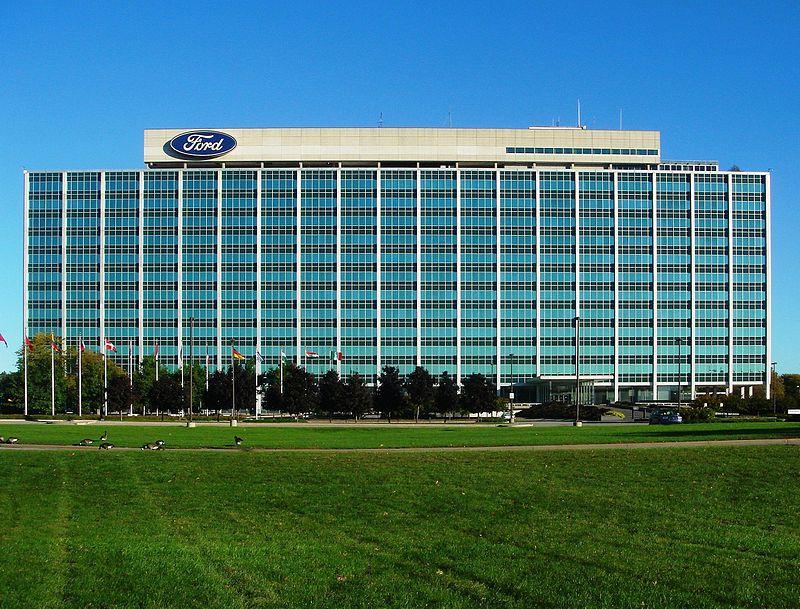

Companies including Google, UPS, Ford Motor Co., Microsoft and eBay have long positioned themselves as leaders in the fight against climate change — their work, in fact, has been regularly featured here in Triple Pundit by many of our writers, including me. But Forecast the Facts, a project of the Citizen Engagement Laboratory, has issued a scathing report on what it describes as their funding of “climate change deniers.”
And it is the aforementioned companies for which Forecast the Facts has the harshest words. This report “raises questions about Google’s own honesty”; calls out Bill Ford for his company’s donations to climate deniers who “thwart, even mock, sustainability”; equates US$1 million in Microsoft donations to funding Big Tobacco scientists; and in turn is dismissive of eBay’s and UPS’ efforts related to sustainability based on some of the donations these companies have given out the past few years.
But is it fair to paint these companies as hypocritical based on some of their political donations?
True, political donations to the likes of Oklahoma Sen. James Inhofe, as well as to Reps. Darrell Issa and Cathy McMorris Rodgers, would make anyone with environmental street-cred cringe. But these donations, no matter how opposed one may be to the policies of these politicians and their kin in Congress, need to be taken in context. Just as it is unfair to taint a retail chain’s half-century of community work because of a clod of a CEO, we may want to step back and look at these companies’ policies in their entirety before we sharpen the knives.
For decades the modus operandi in Washington was that business interests donated to Republicans while organized labor wrote checks to the Democrats — and Republicans had long outpaced the Democrats in fundraising. But over two decades ago there was a shift in the flow of political donations, and it accelerated under President Bill Clinton during the 1990s. Wall Street donated generously to Clinton, which was one reason he was able to beat Bob Dole during his 1996 re-election campaign; only a last-minute scandal over renting the Lincoln Bedroom to sketchy donors prevented Bill Clinton from winning in a total landslide. Since then, it has become a common practice for business interests group to donate to both political parties. After all, you want to make sure you have friends on Capitol Hill after each election. Ethical? Probably not. Pragmatic? Definitely.
A closer look at to whom these companies donated will shed more light. Of course Ford is going to donate to Michigan politicians, irrespective of party. Google had an interest in a data center in Oklahoma. Issa’s district covers parts of both San Diego and Orange counties, home to Google offices. UPS will make sure its operations in Georgia are looked out for. And clearly any politician in Washington state will align with Google — with the help of a check, the sad reality in American politics.
The moral high ground dictates that companies truly committed to fighting climate change would avoid climate deniers entirely. But we are not talking about morals — we are talking about politics, and the Supreme Court has cleared the way for companies to donate money to the organizations they wish, completely unimpeded. For a company to withhold funds from a senator or representative because of his or her stance on an issue, from a business perspective, would be foolish. And remember, climate change is only one of many items on a firm’s agenda — immigration, environmental protection, energy policy and trade agreements, and a bevy of other issues, create a situation where one hand will write a check . . . while the other holds its nose in disdain.
Reports such as this #DisruptDenial tirade make for great conversation, a strong social media campaign and in the end, can fire up the base to send in those coveted donations. What would really be valuable, and in the end would drive the discussion in a more helpful way, is a report on how the likes of Google and Ford make an overall difference on climate change. Is there a way to quantify the benefits these firms have done thanks to investments in renewables, greening their supply chains, improving their efficiencies — and subtracting the alleged negative effects of donating to the likes of an Inhofe or a Ted Cruz. Then we can truly see who is walking the walk (while tripping on a few cracks in the pavement) and who is merely talking the talk.
Image credit: Wikipedia (Dave Parker)
Leon Kaye has lived in Abu Dhabi for the past year and is currently spending some time in Uruguay. Follow him on Instagram and Twitter. Other thoughts of his are on his site, greengopost.com.
PwC: Five-Fold Rise in Pace of Carbon Emissions Cuts Needed


Ongoing increases in global greenhouse gas (GHG) emissions mean the world's largest economies will have to work that much harder and pick up the pace of energy-sector GHG emissions reductions in order to avoid the risks and impacts of runaway climate change, according to an analysis of economic growth rates and GHG emissions for G20 economies produced by PwC.
Home to the world's largest economies, G20 countries will have to reduce carbon emissions in the energy sector 6.2 percent for every dollar of GDP -- every year from now to 2100 -- in order to keep global warming within the 2 degrees Celsius (1.8 degrees Fahrenheit) limit agreed to by nearly 200 nations as part of the U.N. Framework Convention on Climate Change's (UNFCCC) Copenhagen Accord. That's more than five times the current pace, PwC analysts highlight in the sixth annual Low Carbon Economy Index, 2 degrees of separation – ambition & reality report.
“After a decade of carbon inertia, we are way behind, and now need to decarbonise at more than five times our current rate to avoid 2 degrees Celsius ... Making up for the inadequacy to date will be technologically harder, financially costlier, and climactically riskier in the future.” Leo Johnson, a partner in PwC's sustainability and climate change unit, stated.
Carbon emissions gap widens
At current rates of energy-sector carbon intensity, the amount of carbon we can emit this century will be used up in 20 years if we are to keep global mean temperature rise within the 2 degrees Celsius limit, according to PwC's analysis.
Globally, annual energy-sector GHG emissions now total just over 30 billion metric tons (Gt), and that's rising with GDP growth of 3.1 percent. The reduction in the carbon intensity of the energy sector was just 1.2 percent. That means that the gap separating what needs to be achieved and what is actually being achieved in terms of energy-sector carbon emissions reductions is widening, PwC analysts highlight.
Analyzing the data across countries, PwC found “an unexpected champion” in terms of how quickly nations are decarbonizing their economies. Australia's decarbonization rate increased 7.2 percent year-over-year in 2014, the second consecutive year Australia has led the G20 in carbon emissions reductions.
The U.K., Italy and China ranked second, third and fourth, respectively, with decarbonization rates of between 4-5 percent. On the flip side of the coin, 2014 carbon intensity rates increased year-over-year in the U.S. as well as four other G20 countries: France, India, Germany and Brazil.
Global mean temperature rise between 3.7 and 4.8 degrees Celsius expected
Overall, atmospheric carbon dioxide (CO2) levels are at their highest in 40 years, acccording to the U.N. Intergovernmental Panel on Climate Change (IPCC), whose scientists established 1.8 degrees Celsius as the tipping point that could trigger runaway climate change.
The current rate of carbon emissions has set the stage for an increase in global mean temperature of between 3.7 and 4.8 degrees Celsius (2.96 to 3.84 degrees Fahrenheit) this century, according to the IPCC. That raises the specter of “severe adverse impacts ... on people and ecosystems through water stress, food security threats, coastal inundation, extreme weather events, ecosystem shifts and species extinction on land and sea.”
Some reasons for optimism
There is cause for optimism despite the ongoing increases in global GHG emissions, however, according to PwC. Reductions in carbon intensity on the part of emerging E7 nations with rapidly industrializing economies are particularly encouraging. The E7 is made up of China, India, Brazil, Mexico, Russia, Indonesia and Turkey. According to PwC's 2014 Low Carbon Economy Index:
- The E7 outperformed the G7 in carbon reduction (1.7 percent vs. 0.2 percent) for the first time in six years, indicating how it can be possible to maintain economic growth while slowing the rate of growth in emissions;
- Renewable electricity generation, excluding hydroelectricity, grew at 16 percent -- a continuing trend for last decade with double-digit growth every year. Renewables now account for nearly 10 percent of total energy mix in six of the G20 economies.
Removing direct and indirect government fossil fuel subsidies and instituting stronger, more persistent incentives that can spur greater deployment of renewable energy are critical to closing the carbon emissions gap. The world political and business stage is being set to accomplish that, Johnson said.
“The E7 has woken up to the business logic of green growth, decarbonizing faster than the G7 for the first recorded time. And globally renewables are emerging fast. As they approach cost parity the stage is set for a policy framework that shifts subsidies away from fossil fuels and accelerates the renewables rollout.”
Keeping within the 2 degrees C limit
Annual GHG emissions across the global energy sector need to drop by one-third by 2030 and just over one-half by 2050 to keep global mean temperature within the 2 degrees Celsius cap. The timeline, PwC states, “is unforgiving.”
In addition:
- Collectively, the G7 group needs to almost double its decarbonization to 4.2 percent per year between 2014 and 2020. They have achieved an average decarbonization rate of 2.2 percent between 2010 and 2013. Absolute carbon emissions (i.e., not just those related to energy) need to fall by 44 percent by 2030 and 75 percent by 2050 compared to 2010 levels;
- For the E7, a carbon intensity reduction of 8.5 percent per annum is required from 2020, followed by further reductions of 5.3 percent a year from 2030 to 2050 to stay within the 2 degrees Celsius budget – a five-fold increase on current levels of decarbonization.
PwC's research highlights, “The disconnect between the global climate negotiations aiming for a 2 degrees Celsius limit on global warming, but national pledges may only manage to limit it to 3 degrees Celsius, and current trajectory is actually on course for 4 degrees Celsius.”
Global climate negotiations
Stronger commitments on the part of world leaders to achiever greater reductions in energy-sector GHG emissions is crucial if global mean temperature rise is to be kept within bounds. PwC's latest Low Carbon Economy Index report arrived as world leaders prepare for the U.N. Climate Summit 2014 convened by Secretary General Ban Ki-Moon at U.N. headquarters in New York on Sept. 23. There, the U.N. Secretary General and staff are aiming to hammer out an increase in member nations' GHG reduction pledges.
“What we’ve seen over the past twelve months is a subtle change in the carbon rhetoric. The costs of climate inaction – from flooding to energy costs to commodity pricing, to food insecurity – appear to be growing stronger,” Jonathan Grant, PwC sustainability and climate change director, stated.
“A broader recognition is needed by both business and political leaders that taking decisive action to avoid the extremes of climate change is a pre-condition for sustained economic growth.” How broadly and deeply that belief is shared by political and business leaders, particularly in the global energy sector, remains to be seen.
Image credits: PwC
Chiquita Sued For Deceptive Sustainability Claims


One aspect of our world that has undisputedly changed is the increased transparency and availability of information. This makes it harder for companies and politicians to get away with making false claims.
Last month, Chiquita Brands International received notice of a lawsuit filed by Seattle-based Water and Sanitation Health (WASH) accusing the company of deceptive advertising practices. Specifically, the company claims in their advertising that their "bananas are farmed in an ecologically friendly and sustainable manner.”
This, according to WASH founder Eric John Harrison, “is far from the truth.”
Says Harrison: "Chiquita sells millions of pounds of bananas that are produced in ways that destroy natural ecosystems and contaminate the drinking water of local communities living next to Chiquita's largest Guatemalan supplier. The pesticides and fungicides used on these Chiquita-contracted plantations are toxic, and the aerial application falls on homes, schools and residents." According to the lawsuit, some 7,200 residents are at risk in the Guatemalan communities of Ticanu, Barra Nahualate, Playa Semillero, San Francisco and Madre Vieja.
WASH has previously reached a settlement with Chiquita’s rival Dole in Guatemala in which Dole agreed to provide clean drinking water to seven communities in the vicinity of Ocos.
Chiquita's practices, according to Harrison, were hidden, even to Rainforest Alliance, which monitors activities in the area and has endorsed Chiquita with their green frog logo. This could be due to the use of independent contractor COBIGUA, which sells million so of pounds of bananas to Chiquita annually and even bears the Chiquita logo on its trucks.
Specifically, the complaint alleges that fungicides containing nitrates and heavy metals at 10 times recommended safe levels are sprayed on the plantations, which have no buffer zones separating them from homes, schools or local water supplies. This appears to directly contradict Chiquita’s claim that they sell “bananas that are grown in a manner that is safe to the environment and to local communities.”
A Chiquita spokesperson told Environmental Leader that the company was considering filing a countersuit against Harrison and WASH for “defamation and other torts associated with his incorrect statements.”
Chiquita was one of several companies included in a review of sustainable sourcing commitments called the State of Sustainability Initiatives. The report highlights efforts that Chiquita has taken in conjunction with Rainforest Alliance going back to 1992. Bt 2008, a full 87 percent of Chiquita bananas were Rainforest Alliance certified including those grown on non-Chiquita farms.
Chiquita has been the frequent target of various lawsuits. Last year, a lawsuit blaming the company for thousands of deaths in Colombia by the right-wing paramilitary group AUC was filed in U.S. federal court. The company does not deny paying $1.7 million to the Colombian group over a period of years, for which it paid a $25 million fine for supporting terrorists, though it claims that the money was extorted. The suit was dismissed in July.
The South and Central American banana trade has had a long and sordid history of labor struggles and violence, as chronicled in the novel, "One Hundred Years of Solitude," by Nobel Prize winning author Gabriel Garcia Marquez.
In the news this week, Chiquita is entertaining takeover bids by the Brazilian orange juice giant Cutrale Group and the Safra Group bank as well as Irish distributor Fyffes.
Image credit: Sérgio Bettencourt: Flickr Creative Commons
RP Siegel, PE, is an author, inventor and consultant. He has written for numerous publications ranging from Huffington Post to Mechanical Engineering. He and Roger Saillant co-wrote the successful eco-thriller Vapor Trails. RP, who is a regular contributor to Triple Pundit and Justmeans, sees it as his mission to help articulate and clarify the problems and challenges confronting our planet at this time, as well as the steadily emerging list of proposed solutions. His uniquely combined engineering and humanities background help to bring both global perspective and analytical detail to bear on the questions at hand.
Follow RP Siegel on Twitter.